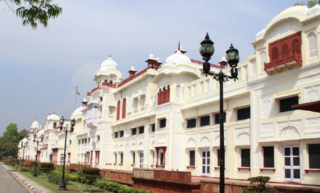
Patiala is a city in southeastern Punjab, northwestern India. It is the fourth largest city in the state and is the administrative capital of Patiala district. Patiala is located around the Qila Mubarak constructed by a chieftain Ala Singh, who founded the royal dynasty of Patiala State in 1763, and after whom the city is named.

The Lahore Fort is a citadel in the city of Lahore in Punjab, Pakistan. The fortress is located at the northern end of the Walled City of Lahore and spreads over an area greater than 20 hectares. It contains 21 notable monuments, some of which date to the era of Emperor Akbar. The Lahore Fort is notable for having been almost entirely rebuilt in the 17th century, when the Mughal Empire was at the height of its splendor and opulence.

The Walled City of Lahore, also known as the Old City, forms the historic core of the city of Lahore in Punjab, Pakistan. The city was established around 1000 CE in the western half of the Walled City, which was fortified by a mud wall during the medieval era. It is the cultural centre of the Punjab region.
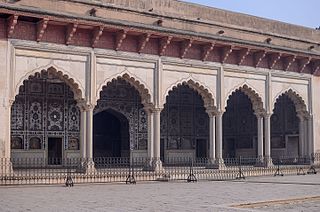
The Sheesh Mahal is a palace located within the Shah Burj block in northern-western corner of Lahore Fort. It was constructed under the reign of Mughal Emperor Shah Jahan in 1631–32, with some additions later under Sikh Maharaja Ranjit Singh. The ornate white marble pavilion is inlaid with pietra dura and complex mirror-work of the finest quality. The hall was reserved for personal use by the imperial family and close aides. It is among the 21 monuments that were built by successive Mughal emperors inside Lahore Fort, and forms the "jewel in the Fort’s crown." As part of the larger Lahore Fort Complex, it has been inscribed as a UNESCO World Heritage Site since 1981.
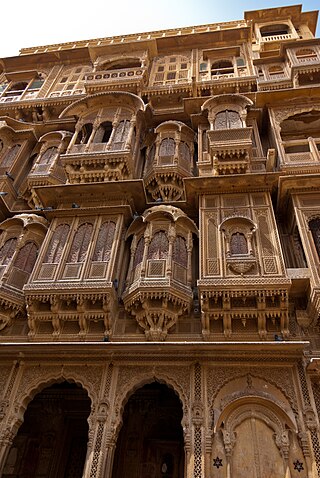
A haveli is a traditional townhouse, mansion, or manor house, in the Indian subcontinent, usually one with historical and architectural significance, and located in a town or city. The word haveli is derived from Arabic hawali, meaning "partition" or "private space", popularised under the Mughal Empire, and was devoid of any architectural affiliations. Later, the word haveli came to be used as a generic term for various styles of regional mansions, manor houses, and townhouses found in the Indian subcontinent.

Majha is a region located in the central parts of the historical Punjab region, currently split between the republics of Pakistan and India. It extends north from the right banks of the river Beas, and reaches as far north as the river Jhelum. People of the Majha region are given the demonym "Mājhī" or "Majhail". Most inhabitants of the region speak the Majhi dialect, which is the basis of the standard register of the Punjabi language. The most populous city in the area is Lahore on the Pakistani side, and Amritsar on the Indian side of the border.
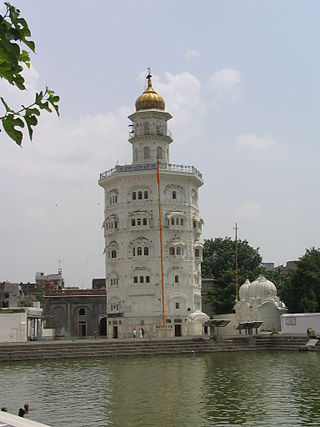
Gurdwārā Bābā AṭṭalRāi is a famous Gurdwara in Amritsar dedicated to Atal Rai, a son of Guru Hargobind and Mata Nanaki. It consists of nine stories and is around forty metres in height. It is just a short walk from the famous Harmandir Sahib.

Sikh architecture is a style of architecture that was developed under the Sikh Confederacy and Sikh Empire during the 18th and 19th centuries in the Punjab region. Due to its progressive style, it is constantly evolving into many newly developing branches with new contemporary styles. Although Sikh architecture was initially developed within Sikhism its style has been used in many non-religious buildings due to its beauty. 300 years ago, Sikh architecture was distinguished for its many curves and straight lines; Keshgarh Sahib and the Harmandir Sahib are prime examples.

Takal is the biggest village in Choha Khalsa Union Council of Kallar Syedan Tehsil, Rawalpindi District of Punjab, Pakistan. Nearby towns include Bewal and Choha Khalsa. The village named after a Sikh – Tikka Lal Singh. It is located about 15 kilometres (9.3 mi) from Kallar Syedan, towards the Jhelum River.
Kallar Syedan is a tehsil in the Rawalpindi District, Punjab, Pakistan. Earlier a part of the Kahuta Tehsil, it became a separate tehsil on 1 July 2004.
Thoha Khalsa is a village in Kahuta Tehsil, Rawalpindi District in Punjab Province of Pakistan.

Sangni Fort also known as Sangani Killa is a fort of Sikh Period near the village Takal in Kallar Syedan Tehsil, Rawalpindi District, in Punjab, Pakistan.
Dera Khalsa is a village in the Kallar Syedan Tehsil, Rawalpindi District, Punjab province of Pakistan. The name was given by rulers of this region during Sikh rule in Punjab. This name is still used to refer this village. Presently the entire population of this village is Muslim, having strong religious beliefs and 95% of existing families are migrated from Jammu in 1947. Presently residing families settled in this village in 1951–52.
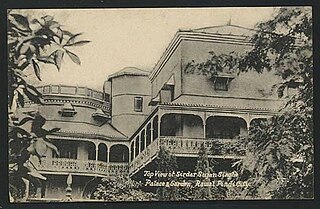
Haveli Sujan Singh, also known as Sujan Singh Haveli, is a haveli located in the congested market of Bhabra Bazar Rawalpindi, Punjab, Pakistan.
Ambassador Lieutenant-Colonel BabaDaya Singh Bedi (1899–1975) was an Indian diplomat, Civil Servant and a Cavalry officer in the British Indian Army with the 6th Duke of Connaught's Own Lancers who after the partition of India served as India's First High Commissioner to Australia from 1948 to 1951 and Chief Commissioner of Coorg State from 1951 to 1956.
Choa Khalsa is a town and Union Council of Kallar Syedan Tehsil, Rawalpindi District, Punjab, Pakistan. Town consist of 800 houses. On 1 July 2004, Choa Khalsa became the Union Council.

Khem Singh Bedi KCIE was a claimed direct descendant of Guru Nanak, a leader, and the founder of the Amritsar Singh Sabha in 1873. It instituted many charitable causes for Sikhs, was a landowner and politician in the Punjab during the British Raj.

The Haveli of Nau Nihal Singh, officially known as Government Victoria Girls' High School, is a haveli that houses a government school located in Lahore, Pakistan. Dating from the Sikh era of the mid-19th century, the haveli is considered to be one of the finest examples of Sikh architecture in Lahore, and is the only Sikh-era haveli that preserves its original ornamentation and architecture.
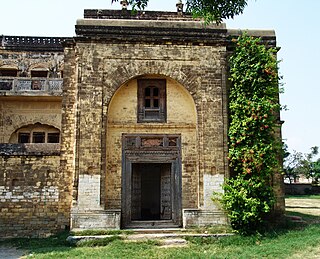
Kallar Syedan is a city located in Punjab, Pakistan, and is the headquarters of the Kallar Syedan Tehsil.



















